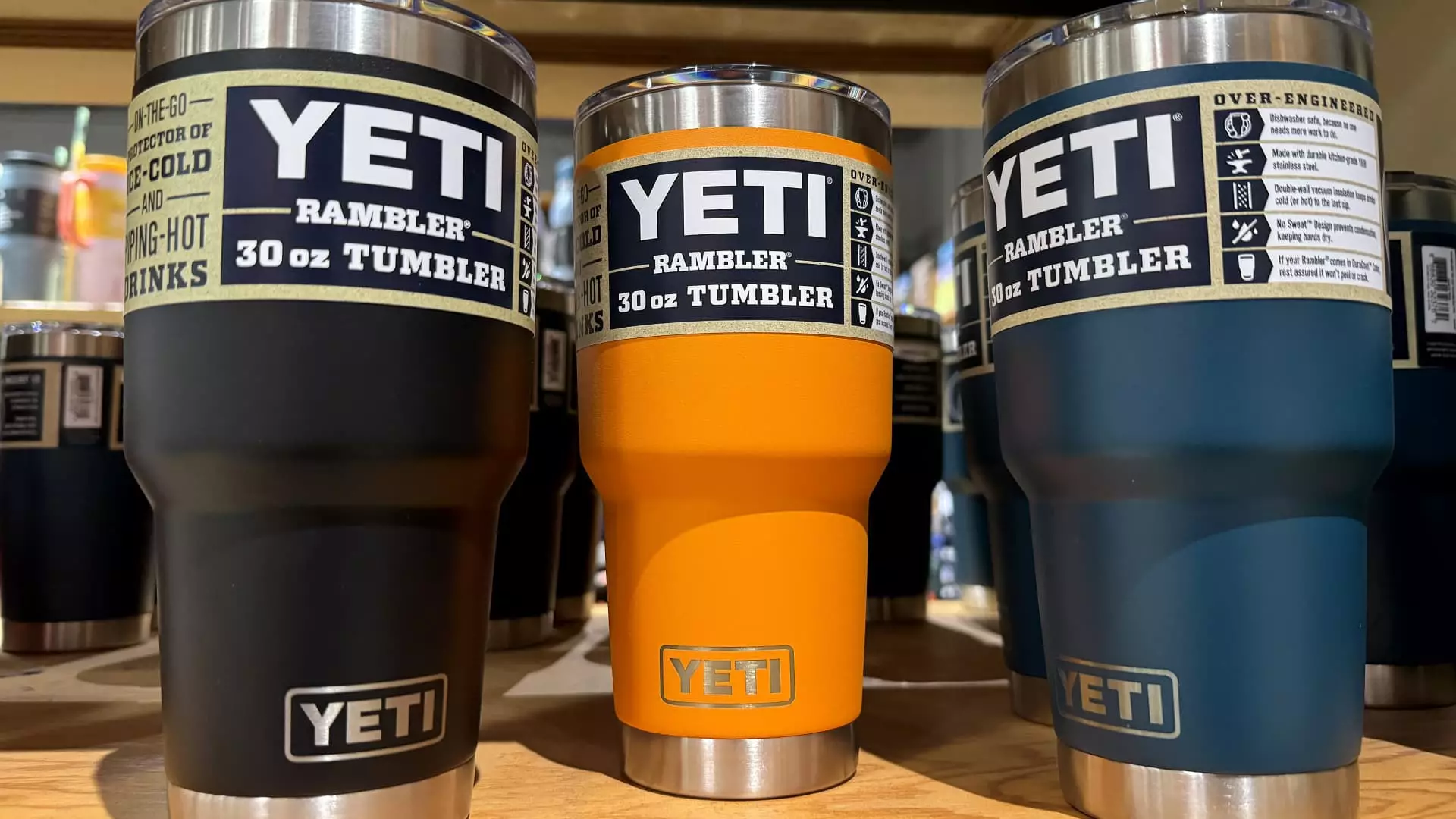Yeti Holdings, with its market value hovering around $2.5 billion, is a prime example of how even the most promising companies can stall in their growth. Known for its rugged outdoor gear and premium beverage containers, you’d expect Yeti to be riding high on the successes of its innovative designs and consumer loyalty. Instead, the company’s trajectory has veered ominously downward, leading to growing discontent among investors and stakeholders alike. Trading at merely $30.15 per share, after a euphoric peak of $108 in late 2021, investors are left grappling with a frustrating reality—what was once labeled a “must-have” brand is now perceived as stagnant and lackluster in potential growth.
Why has Yeti deteriorated from a high-flying public entity to a cautionary tale? The issues seem deeper than mere financial metrics. The company has indeed experienced a slowdown in growth, with a disheartening mere 3.98% rise projected for 2023. But the core problem lies in Yeti’s failure to capitalize on its strengths and communicate its vision clearly to the market.
Missed Opportunities and Underutilized Strengths
Yeti’s commitment to quality, particularly in insulation and moisture protection, has been its calling card. However, with an impressive product portfolio consisting of coolers, drinkware, and outdoor gear, the company appears overly reliant on these categories. A meager 2% of net sales coming from apparel and equipment underlines a failure in diversification that could drive future growth. If Yeti could harness its established reputation and loyalty, it could seamlessly extend its product lines into other outdoor essentials—think luggage, camping gear, or even a specialized line of apparel designed for outdoor enthusiasts.
What further exacerbates the situation is Yeti’s geographic limitations. With successful expansions into Canada and Australia, strategic opportunities in Europe and Asia remain largely untapped. By ignoring these potentially lucrative markets, Yeti is squandering its competitive advantage and could find itself sidelined as more agile competitors swoop in to capture these segments. In the age of global commerce, it’s not just disappointing; it’s infuriating that Yeti has allowed itself to plateau amid a wealth of growth underpinnings in international markets.
Lack of Communication and Investor Engagement
In the realm of public companies, investor communication is paramount, yet Yeti seems to fall alarmingly short in this regard. The absence of a dedicated investor day signifies a troubling disconnect between Yeti’s management and its shareholders. Investors are clamoring for transparency and a roadmap of the company’s growth aspirations. A number-driven approach is essential, and by failing to communicate clear metrics or ambitions, Yeti risks alienating its core investor base, as well as potential new shareholders.
The comparison with companies like SharkNinja is hard to ignore. SharkNinja, a brand originally confined to kitchen appliances, has taken bold strides in diversifying its product range and capitalizing on its legacy of quality. They communicate effectively, sharing midterm growth targets and actively engaging at industry conferences. The result is impressive compound annual growth rates—an enviable scenario for any investor, which Yeti could easily achieve if it adopted a similar strategy.
A New Board but the Same Old Problems?
The recent cooperation agreement between Yeti and Engaged Capital, while promising two new board members with significant experience, raises the question of whether this will be merely cosmetic changes or real actionable strategies designed to shift gears. Engaged Capital, an activist firm, has had a proven track record, barking up the right trees as it holds management accountable. Despite appointing seasoned veterans like former North Face executive Arne Arens, the deeper issue of Yeti’s complacency and risk aversion remains untouched. It’s as if the lion has been caged—the company has a robust strategy for capturing value, yet it seems afraid to leap into the uncertain.
For CEO Matt Reintjes, the focus seems more on securing long-term incentives tied to free cash flow generation than on aggressive growth. This risk-averse stance could lead to stagnation as Yeti fails to leverage its strengths. The addition of two experienced directors should work against this mindset, but will the management truly alter its approach to foster meaningful growth? Only time will tell, but many investors are bracing for disappointment rather than progress.
It’s unsettling to realize that Yeti, as of now, seems to be content with simply maintaining its existing customer base rather than ambitiously expanding its reach and tapping into new opportunities. Investors surely deserve more from a company sitting on such a wealth of potential. The clock is ticking, and if Yeti does not act decisively soon, it may find itself stiff-armed by both investors and competitors.


Leave a Reply